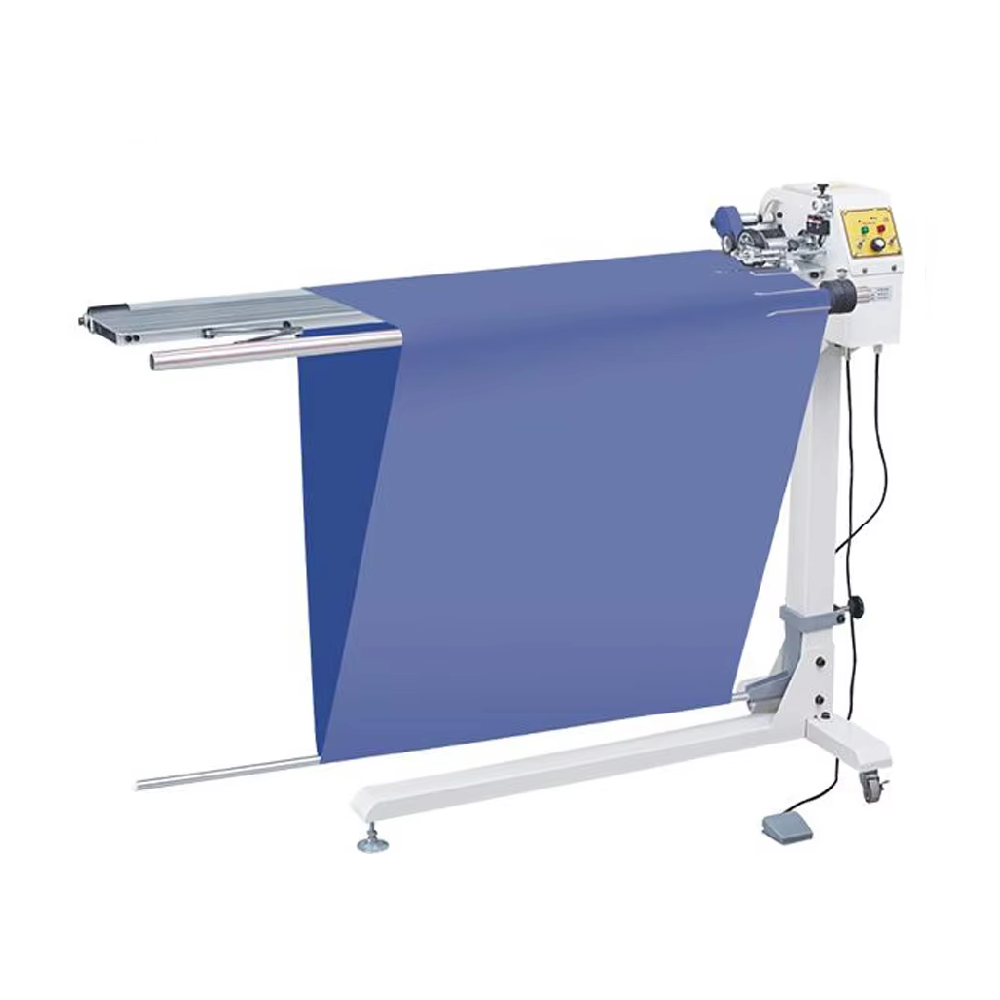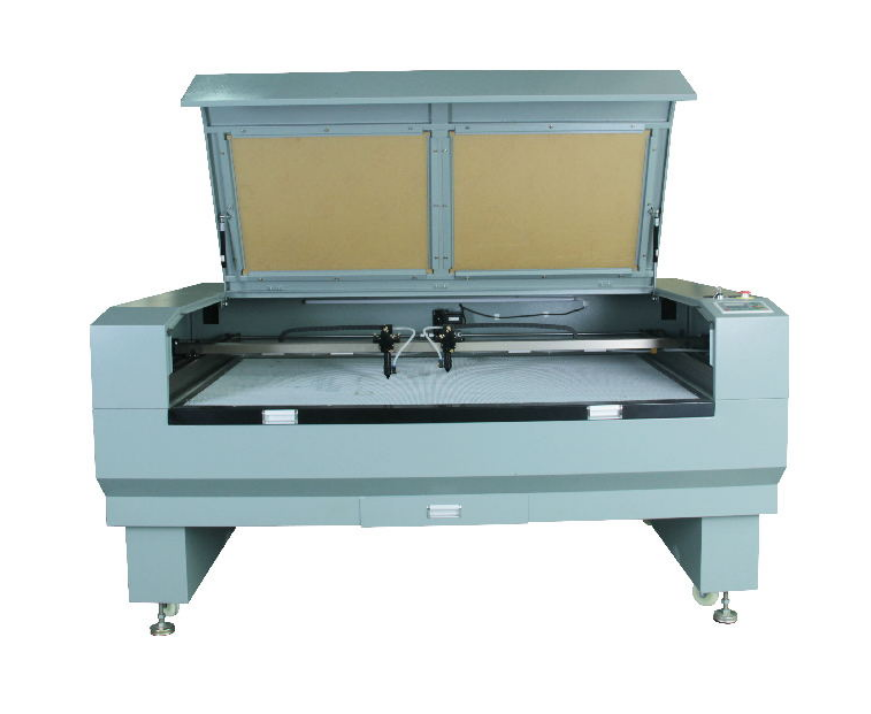천 절단기가 작업장 효율성을 어떻게 혁신하는지
수작업에서 자동화된 정밀 작업으로
기존의 수작업으로 천을 자르던 방식에서 현대식 자동화 천 절단 기계로 전환함으로써 의류 제조 산업 전반의 정확도가 크게 향상되었습니다. 이러한 기계들은 천을 손으로 자를 때 사람에 의해 발생하는 작은 실수들을 거의 완전히 제거해 주기 때문에 모든 제품이 거의 동일한 품질로 나오게 됩니다. 이는 현재 경쟁이 치열한 시장에서 매우 중요한 요소입니다. 이러한 기계들이 왜 그렇게 우수한 것일까요? 바로 이 기계들은 이전과 똑같이 각 조각을 정확하게 자르기 때문에 불량품이 나오는 수가 줄어들고, 폐기물로 처리되는 제품도 감소합니다. 공장 관리자들에 따르면 생산 공정에 자동화를 도입함으로써 인건비와 제조 시간 모두를 절감할 수 있어 제품을 이전보다 빠르게 매장에 공급할 수 있다고 합니다. 그리고 말하자면, 이러한 효율성이야말로 오늘날 고객들이 제품이 정확하게 만들어져서 빠르게 배송되기를 요구하는 상황에서 제조업체들이 경쟁 우위를 유지할 수 있게 해주는 요소입니다.
컴퓨터화된 패턴 실행의 시간 절약 능력
컴퓨터화된 패턴 실행 기능이 있는 천절단 기계는 여러 개의 절단 패턴을 동시에 처리할 수 있어서 생산 시간을 크게 단축시키는 획기적인 기능을 제공합니다. 대부분의 작업장에서는 이러한 작업에 CAD 소프트웨어에 의존하고 있습니다. 이 소프트웨어를 통해 작업자는 사용되는 직물의 종류와 실제 디자인 요구사항에 따라 패턴을 실시간으로 조정할 수 있습니다. 이는 전반적으로 자재 낭비를 줄여줍니다. 일부 연구에 따르면 이러한 컴퓨터 시스템을 사용하는 공장은 기존 방식에 비해 약 50%의 노동 시간을 절약하는 것으로 나타났습니다. 단순히 작업 속도를 높이는 것을 넘어 이러한 효율성은 제조업체가 고객의 요구사항 변화에 보다 빠르게 대응할 수 있는 유연성을 제공하여 경쟁이 점점 치열해지고 있는 섬유 제조 시장에서 앞서 나가도록 도와줍니다.
현대 절단 장비에서 효율성을 높이는 주요 기능
직물 취급 시스템의 자동화 기능
오늘날 의류 절단기는 자동화된 원단 취급 시스템을 도입함으로써 공장의 운영 방식을 바꾸고 있습니다. 이러한 새로운 시스템은 거의 사람의 도움 없이도 절단기에 원단을 공급할 수 있어서 작업자가 직접 자재를 다루는 필요성을 줄여줍니다. 이러한 작업을 자동화하면 오류 발생 가능성이 줄어들고 전반적인 작업 흐름이 원활해져서 하루 생산량이 늘어나게 됩니다. 이 시스템을 도입한 공장들은 생산성이 상당히 향상된 것을 체감하고 있습니다. 일부 공장에서는 설치 후 약 30% 이상의 생산 증가를 보고하기도 합니다. 경쟁력을 유지하려는 제조업체들에게 이러한 자동화 도입은 합리적인 선택이 됩니다. 아직 이러한 기술 전환에 뒤처진 경쟁 업체들에 비해 앞서 나갈 수 있기 때문이며, 전반적인 섬유 산업이 보다 똑똑하고 빠르며 우수한 제품 생산 방식으로 나아가고 있는 추세입니다.
복잡한 의류 패턴을 위한 정밀 절단
오늘날 의류 제작에서는 패턴이 복잡한 작업에서 실수가 용납되지 않기 때문에 정확한 절단 작업이 매우 중요합니다. 최고 수준의 절단 장비는 블레이드의 이동 경로를 작업 중에 실시간으로 조정하는 스마트 센서를 탑재하여 모든 부품이 일관되게 정확하게 절단될 수 있도록 보장합니다. 이러한 절단 방식이 중요한 이유는 무엇일까요? 바로 정밀 절단은 원단 낭비를 줄이고 원단 사용률을 높여 정확한 치수를 요구하는 업계에서 매우 유용하기 때문입니다. 현장에서 일하는 대부분의 전문가들은 이러한 첨단 절단 기술을 공정에 도입하는 것이 단순히 제품 품질을 개선하는 것 이상으로, 봉제 단계에서 옷의 각 부위가 정확하게 맞물려 함께 결합될 수 있도록 보장한다는 점을 강조합니다. 점점 더 세밀한 디자인의 의류를 요구하는 고객들의 니즈에 부응하면서도 품질 기준과 효율적인 자재 사용을 유지해야 하는 기업들에게는 고품질 절단 시스템에 투자하는 것이 실용적, 경제적 측면에서 모두 합리적인 선택이라 할 수 있습니다.
고속 작동 시 정확도 손실 없음
최근 섬유 제조업계는 빛과 같이 빠른 속도로 움직이고 있기 때문에, 정확성을 희생하지 않으면서 신속하게 작업할 수 있다는 것은 기업에게 경쟁 우위를 의미합니다. 신세대 커팅 머신은 고급 블레이드 시스템과 강력한 모터 장치를 통해 이러한 약속을 실제로 실현하고 있습니다. 실제 섬유 업체들은 옛 기술에 비해 약 40% 더 빠른 속도로 소재를 절단할 수 있으면서도 섬유를 손상시키지 않고, 절단면은 또렷하고 깨끗하게 유지할 수 있다고 보고하고 있습니다. 산업 현장의 반복적인 시험 결과도 최고 속도로 작동할 때 품질 저하가 없다는 것을 뒷받침하고 있습니다. 이러한 커팅 머신을 도입한 공장들은 빠른 생산 주기와 확고한 정밀도라는 두 가지 혜택을 동시에 누릴 수 있습니다. 이는 제조업체가 속도와 정확성 중 하나를 택해야 하는 부담에서 벗어날 수 있음을 의미합니다. 품질 기준을 희생하지 않으면서 생산 능력을 확장하려는 업체들에게는 차세대 커팅 솔루션에 투자하는 것이 사업적으로 매우 합리적인 선택이라 할 수 있습니다.
생산을 혁신하는 의류 절단 기계의 종류
민감한 직물용 레이저 절단 시스템
레이저 절단 기술은 섬세한 원단을 다룰 때의 작업 방식을 완전히 바꿔 놓았으며, 마모를 최소화하면서도 훨씬 더 정밀한 절단이 가능하게 해줍니다. 이러한 시스템은 집중된 레이저 빔을 사용하여 이전 기술로는 불가능했던 깨끗하고 세밀한 절단을 실현합니다. 큰 장점 중 하나는? 연구에 따르면 레이저 기술은 원단 손상을 약 60% 줄여주어 전체적으로 소모되는 자재를 줄일 수 있다는 점입니다. 이 기술이 특히 유용한 이유는 실크나 얇은 합성 소재와 같이 극도로 민감한 소재에서도 훌륭하게 작동하기 때문입니다. 이는 디자이너들이 과거에는 불가능했던 방식으로 경계를 확장할 수 있게 해줍니다. 또한 이러한 기계들은 전통적인 절단기보다 빠르게 작동하며 장기적으로 실제로 더 적은 전력을 소비합니다. 예산을 초과하지 않으면서 작업 방식을 현대화하려는 섬유 업계 종사자라면 현재로서는 레이저 절단이 분명히 현명한 선택이 될 것입니다.
대량 작업용 컴퓨터화된 날개 기계
대량 작업의 경우, 컴퓨터 제어 블레이드 기계는 제조업체가 기존의 방법보다 훨씬 더 많은 양을 빠르게 절단할 수 있도록 해주는 혁신적인 도구가 되었습니다. 많은 모델에는 스마트 패턴 인식 기능이 탑재되어 있어 운영자의 판단 작업을 대신해 주며, 절단 과정 전반을 보다 원활하게 진행할 수 있고 생산량 전반을 증가시킵니다. 업계를 깊이 이해하고 있는 전문가들에 따르면, 이러한 고도화된 시스템은 경우에 따라 생산 속도를 최대 200%까지 끌어올릴 수 있는데, 이는 시간이 곧 돈인 상황에서 매우 큰 차이를 만듭니다. 이러한 자동화의 또 다른 장점은 인건비를 줄여 주는 동시에 갑작스러운 수요 증가로 인한 분주한 시기에도 원단 품질을 일관되게 유지할 수 있다는 점입니다.
다층 재료 가공을 위한 워터젯 기술
고압수절단 기술은 여러 겹의 소재를 절단할 때 상당히 혁신적이 되었습니다. 이 시스템은 물을 매우 높은 압력으로 분사하여 어떤 휨이나 변형도 유발시키지 않고 다양한 층들을 정확하게 자릅니다. 복잡한 패턴이나 천에 적용된 세밀한 디자인을 다루는 제조업체의 경우, 이러한 방식은 결과에 큰 차이를 가져옵니다. 섬유 엔지니어들은 쌓여 있는 소재들에 대해 물줄기가 깨끗한 가장자리를 만들어내고 절단 과정에서 각각의 층을 그대로 유지해준다는 점을 강조합니다. 생산 현장에서 특히 중요한 것은 고압수절단이 단순한 디자인이나 복잡한 디자인 모두를 동일한 정밀도로 처리할 수 있다는 것입니다. 게다가 레이저 절단과는 달리 열을 사용하지 않기 때문에 최종 제품이 더 나은 구조적 완전성을 유지할 수 있습니다. 섬유 공장들에서는 특히 섬세하거나 민감한 천을 다룰 때, 전통적인 기계식 절단기보다 더 빠르고 우수한 결과를 제공하기 때문에 고압수절단 시스템을 작업 공정에 도입하기 시작했습니다.

고급 절단을 통한 재료 활용도 최대화
최적의 직물 배치를 위한 네스팅 소프트웨어
적절한 네스팅 소프트웨어는 텍스타일 제조 공정에서 재단 및 배치 방식을 혁신적으로 바꿀 수 있습니다. 이러한 프로그램은 원단의 패턴과 치수를 분석하여 롤 위에 각 조각이 어디에 배치되어야 할지를 계산합니다. 이를 통해 재단 간의 공간 낭비를 크게 줄일 수 있습니다. 이 기술을 도입한 제조사들은 재료비만 수천 달러를 절약할 수 있었고, 환경 영향도 줄일 수 있었다고 보고하고 있습니다. 업계 보고서에 따르면, 일부 공장에서는 효과적인 네스팅 솔루션을 도입한 후 원단 사용량이 20%에서 최대 30%까지 감소했습니다. 단순히 비용 절감뿐 아니라 이러한 효율성 향상은 결국 폐기물의 매립지로 가는 잔여 부스러기들을 줄이는 데도 중요한 기여를 합니다.
오류 감소 알고리즘 폐기물 최소화
최근 커팅 기술 분야에서는 특히 오류 감소 알고리즘의 혁신으로 인해 상당한 발전이 있었습니다. 이러한 스마트 시스템은 커팅 과정 중 발생하는 문제를 실시간으로 감지하고 실시간으로 조정하여 오류가 폐기물로 이어지지 않도록 방지합니다. 일부 제조사에 따르면 이 기술을 도입한 후 자재 폐기율이 약 15% 감소했다고 합니다. 생산 비용 측면에서 이러한 절감 효과는 빠르게 누적되며, 공장 운영도 한층 매끄러워졌습니다. 경쟁사를 앞서기 위해 노력하는 섬유 기업들에게 보다 우수한 커팅 솔루션에 투자하는 것은 다양한 측면에서 경영적 타당성을 갖습니다.
스마트 생산 라인에 절삭기를 통합하기
실시간 모니터링을 위한 IoT 연결 절삭 시스템
생산 라인업에 IoT 연결된 절단 시스템이 적용되면 제조업체는 기계가 실제로 매일 어떻게 작동하는지 추적하는 실시간 데이터 스트림에 액세스 할 수 있습니다. 장비의 실시간 모니터링이 예측 유지보수를 훨씬 더 효과적 이 스마트 시스템은 작은 문제가 큰 고장으로 변하기 전에 문제를 일찍 발견합니다. 계획되지 않은 정지 현상을 줄이고 공장 바닥을 원활하게 유지합니다. 공장 관리자들은 IoT 솔루션을 도입한 많은 공장들이 구현 후 25% 정도의 효율성을 더 높인 결과를 보고했습니다. 기계가 최고 수준의 속도로 작동하도록 하는 것 외에도 지속적인 모니터링은 예상치 못한 문제가 발생했을 때 갑자기 발생하는 수리 비용을 피하는 데 도움이 됩니다. 그리고 솔직히 말해서, 지난 주에 어떤 부품이 조용히 고장 났기 때문에,
봉제 작업장과의 자동 워크플로우 조율
절단 기계가 자동화 시스템을 통해 재봉 공정과 소통할 때, 공장은 제품 생산 속도 측면에서 상당한 향상을 경험하고 있습니다. 이러한 연결된 시스템은 제조 과정의 서로 다른 단계 사이에서 매끄러운 전환을 만들어내어, 다운타임이 줄어들고 생산 일정에 대한 통제가 향상됩니다. 최근 텍스타일 제조사들의 보고에 따르면, 이러한 기술을 도입한 공장은 생산성이 약 30% 증가했다고 합니다. 그 주요 이유는 무엇일까요? 바로 운영이 제대로 동기화되면 모든 것이 더 원활하게 작동하기 때문입니다. 이제 기계들은 자재를 기다리며 유휴 상태에 있는 일이 줄어들고, 작업자들은 병목 현상을 해결하는 데 소비하는 시간이 줄어듭니다. 또한 장시간의 생산 라인에서도 품질이 일관되게 유지됩니다. 복잡한 디자인이나 엄격한 마감 기한을 다뤄야 하는 의류 제조사에게는 이러한 모든 요소들을 중앙에서 통제할 수 있다는 사실이 엄청난 차이를 만듭니다. 단순히 생산 속도만 빨라지는 것이 아니라, 이러한 시스템이 도입되면 공장 전체가 마치 시계처럼 정확하게 작동하게 됩니다.
자주 묻는 질문
천 자르기 기계는 의류 제조에서 어떻게 정밀도를 향상시키나요?
천 자르기 기계는 인간 오류를 최소화하고 고급 센서 및 소프트웨어를 사용하여 각각의 자르기를 동일하게 유지함으로써 의류 품질을 크게 향상시킵니다.
CAD 소프트웨어는 의류 절단기에서 어떤 역할을 하나요?
CAD 소프트웨어는 실시간 패턴 조정을 가능하게 하고 직물 사용을 최적화하여 제조 과정의 효율성을 향상시키고 생산 시간과 폐기를 줄입니다.
자동화가 어떻게 의류 절단 효율성을 개선하나요?
의류 절단에서 자동화는 노동력 필요를 줄이고 인간 오류를 방지하며 지속적인 운영과 처리량 증가를 보장하여 결국 생산 효율성을 높입니다.
IoT를 의류 절단기에 통합하는 것의 이점은 무엇인가요?
IoT를 의류 절단기에 통합하면 실시간 모니터링과 예측 유지보수가 가능해져 잠재적인 문제를 선제적으로 해결하여 운영 효율성을 향상시키고 비용을 줄입니다.

